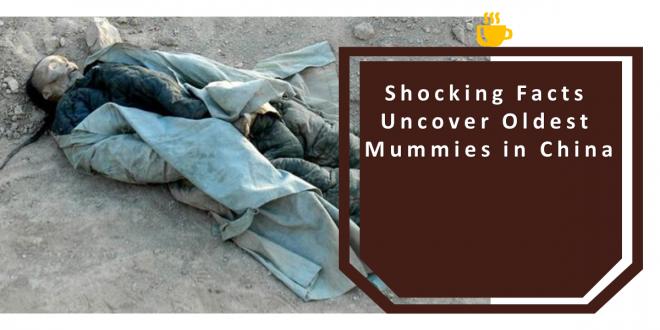A DNA study by Chinese, American and European researchers has revealed surprising facts about the 13 oldest mummies thought to be the ancestors of China.
The research showed that the mummies found were not ancestors of modern-day Chinese.
Researchers looked at genetic information from a mummy in the Tarim River Valley, China’s Xinjiang Province. The mummies are among the oldest, dated between 3,700 and 4,000 years ago.
Other DNA retrieved were five mummies from Dzungarian in northern China’s Xinjiang province. They date back between 4,800 and 5,000 years, and are considered the oldest humans found in the area.
“Mummies have long attracted the attention of scientists and the public since their initial discovery. Besides their extraordinary preservation, they display diverse and pervasive cultural elements,” said Christina Warriner, assistant professor of anthropology at Harvard University. CNN, Thursday (28/7).
“We actually found strong evidence that they represent isolated local populations,” Warriner later said.
DNA provides strong evidence for people’s movements when records or other clues are scant, said Vaghees Narasimhan, an assistant professor at the University of Texas.
Although not involved in the research, Vaghees described the study as interesting.
The results showed that the Tarim River Valley mummy showed no signs of mixing with other groups living at that time.
To him, this isolation is different from genetic separations that seem open to new ideas and technologies from herders and farmer neighbors.
“(They) while developing unique cultural elements that other groups don’t have,” Vaghees said.
The mummies are believed to be the direct descendants of a group that spread widely during the Ice Age, but some disappeared around 10,000 years ago.
They are referred to as the ancient North Eurasian people. Traces of this hunter-gatherer population survive in only a small fraction of the genes of present-day populations. But very similar to the natives in Siberia and America.
Genetic samples from other regions showing people of mixed ancestry with Bronze Age populations differed in these regions. This also genetically isolates the Tarim mummy.
“This is an extraordinary crossroads. There is a dynamic mix of North, South, East and West dating back 5,000 years,” said Michael Frachetti, professor of anthropology at the University of Washington.
He saw this as a paradox. Mummies are a very culturally integrated community, but there is something else unique about them.
“(They) retain very iconic and unique components of their local ideology, local culture, local burial customs, and genetic profiles that don’t mix with their ancestors,” he said.
Narasimhan assessed that the likelihood of a population being genetically isolated but culturally cosmopolitan still exists.
“Genetics doesn’t always have to go hand in hand with cultural or linguistic changes,” he says.
“People can always adopt new techniques from other groups, whether agriculture or metalworking, or change burial practices and the like without displacement or population change.”
While DNA studies are revealing details about the mummies, that doesn’t seem to be the end of their origins.
Narasimhan said the study showed the mummy was found in one area, and it’s not clear whether a larger site search in the Tarim Basin would result in the discovery of different genetic links.
The ancient genetic samples from the area are excellent, Farchetti said. It is possible that they found other genetic influences from the Himalayas or Tibet.
While previous research has shown that the mummies lived on the edge of desert oases, it remains unclear why they were buried in boats covered with calfskin and oars over their heads. A rare app not seen anywhere else.
“They buried their bodies in boats and no one else did. This means where the tradition comes from is one of the biggest puzzles of this desert population, which should be the last community on this planet,” Farchetti said. Said.
 KratomBorneo.co.id Seputar Informasi dan Tips
KratomBorneo.co.id Seputar Informasi dan Tips



